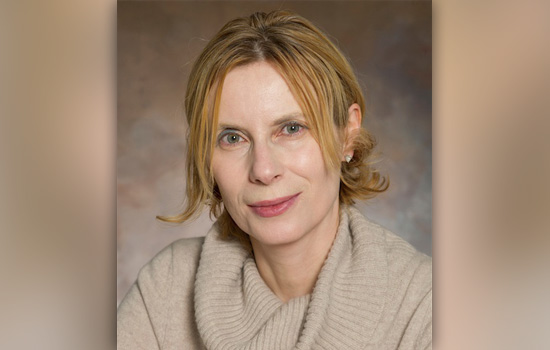Professor shares black hole research Nov. 18
Manuela Campanelli gives invited talk at SC 2015
Supplied image
Manuela Campanelli
Rochester Institute of Technology professor Manuela Campanelli has been invited to talk about simulating supermassive black hole mergers at SC 2015, the international conference for high performance computing, networking, storage and analysis, in Austin, Texas. The event, hosted by the Association for Computing Machinery and the IEEE Computer Society, is expected to draw 10,000 visitors.
Campanelli, director of the Center for Computational Relativity and Gravitation at RIT, will present “Revealing the Hidden Universe with Supercomputer Simulations of Black Hole Mergers” on Nov. 18. She will share recent developments in the field of numerical relativity and relativistic astrophysics.
Simulations of violent astrophysical phenomena reveal clues about galactic evolution, black hole demographics, plasma dynamics in strong-field gravity, and general relativity, said Campanelli, professor in RIT’s School of Mathematical Sciences. Simulations also provide blueprints for observing actual gravitational waves. Campanelli is affiliated with the Laser Interferometer Gravitational-wave Observatory, or LIGO, Scientific Collaboration, which expects to observe these waveforms within the decade and confirm Einstein’s prediction that black holes exist.
Einstein’s theory of general relativity—which turns 100 this November—links gravitational waves to massive collisions and explosions, and fast-moving objects. Black hole mergers, supernovae, spinning compact stars—and the Big Bang—are prime sources for producing gravitational waves.
Campanelli led, in 2005, one of the first teams to simulate black-hole mergers on supercomputers with her numerical technique called “moving puncture.” The American Physical Society included Campanelli’s landmark paper in its “2015—General Relativity’s Centennial” collection of seminal papers.
“Understanding these astrophysical systems requires solving the highly nonlinear and highly coupled field equations of general relativity and relativistic magnethodrodynamics,” Campanelli said. “It is only with the use of sophisticated numerical techniques for simulations, data extraction and visualization, and running on petascale supercomputers of 10 to hundreds of thousands of CPUs simultaneously, that this problem is tractable.”














